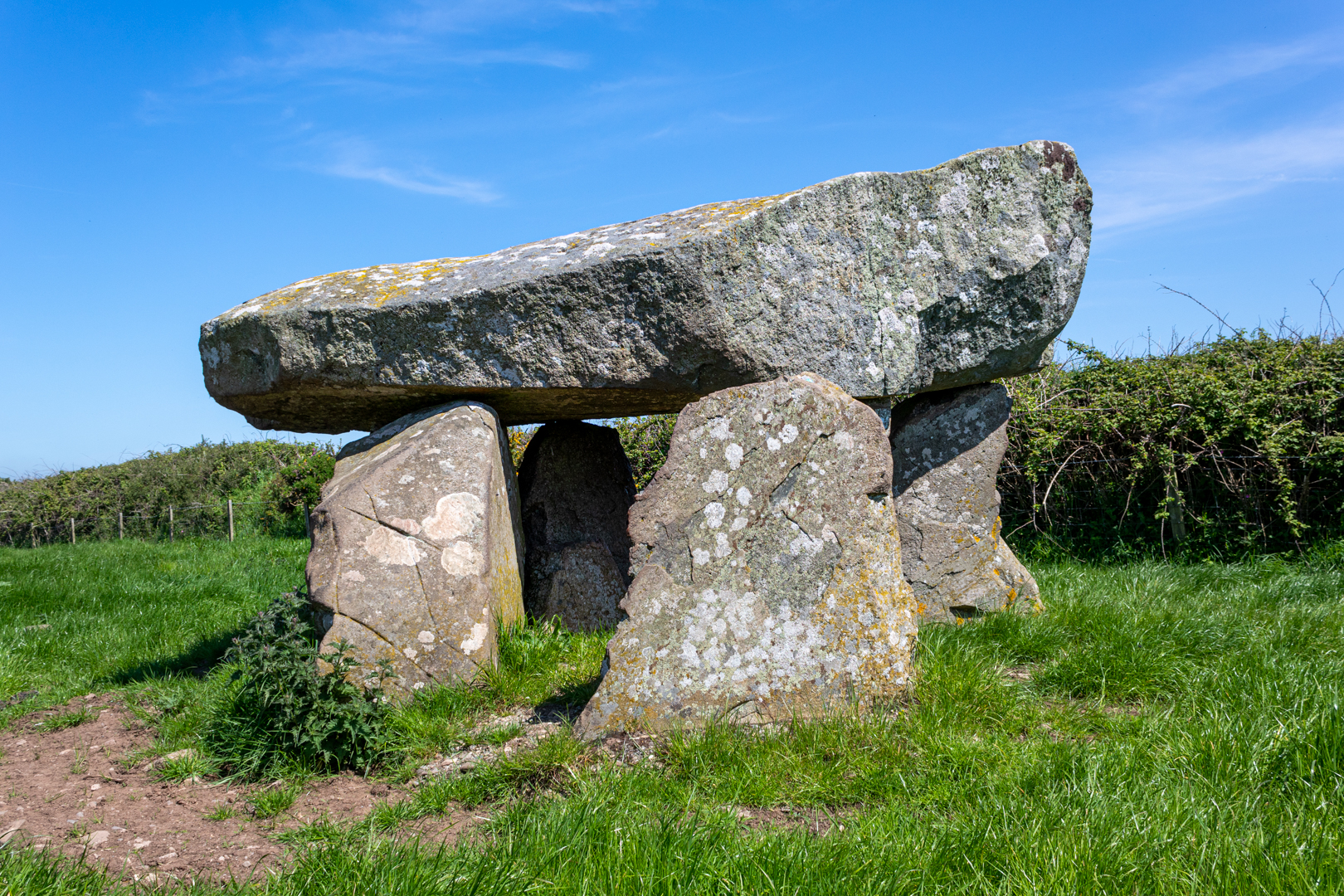Tŷ Newydd burial chamber although ruined, is still a good example of a megalithic dolmen.
Set on a natural outcrop it would originally have been covered with a mound or cairn
now marked out by the small bollards that surround it.
Visit Date May 2023
 |
| Click on image for a larger version. |
Ty-Newydd has a massive cracked capstone, about 4.0m by 1.8m and up to 1.2m thick, that rests on three of the four remaining uprights. The Capstone is likely to have originally been wider as part of the southern edge has broken off.
The chamber was originally part of a passage grave. One theory is that the tomb was originally similar to Bryn Celli Ddu (the subject of a later blog), with a second chamber joined to the first by a passage, and the entire tomb was covered by a large earth mound which was later removed.
Early reports claim that the second larger chamber existed close by, this has long since been broken up and carried away as has any surface evidence of a covering stone cairn so it is impossible to establish the original layout of the site although several small concrete markers around the chamber hint at the possible extent.
It is said to have once been enclosed by a circular wall about 32m in diameter and this may reflect the form of the cairn.
The huge tilted capstone is split and is now partly supported by brickwork and concrete. This does distract from the natural beauty of this site however one suspects that without this intervention the capstone would now be on the ground.
There is a photo in 'The Ancient Stones of Wales' by Barber and Williams, which purports to show Ty Newydd in 1900, with the capstone resting on 3 uprights, without all the modern brickwork.
The chamber was excavated in August 1935 by Charles Phillips.
There was a lot of charcoal, suggesting evidence of a large fire that formed this thick layer of charcoal as well as a quantity of quartz.
There were no human remains found at the site however the finds included five flint flakes, a burnt flint arrowhead, a small chip from a polished flint axe, and some small fragments of pottery. Phillips believed that the pottery fragments were from the Beaker culture, suggesting a Bronze Age reuse of this earlier Neolithic monument.
More recently, prehistoric artwork termed ‘cup marks’ have been detected on the capstone.
Footer:Visit Information: -
Google Reference: -
53.23592779682485, -4.482380635799995
Google search term:
I have had a few problems with google maps trying to locate the exact place by description so please use the google reference above.
What Three Words reference: -
///overgrown.broke.slings
OS Details: -
SH 34422 73862 Altitude:115 ft
Additional information.
Visiting is relatively easy.
There is a turn off to an unnamed road off the A4080
It traveling north the entrance to the field is on the right hand side and is has a ancient monument signpost and information board.
There is a small layby (53.23661829013594, -4.485084849839341).
There are no facilities here.





0 comments:
Post a Comment